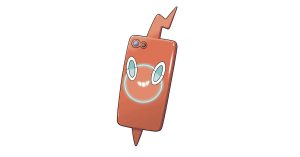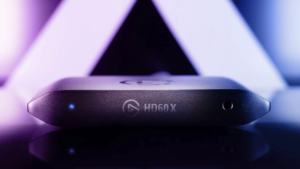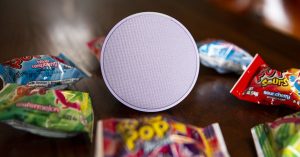DOOM Eternal most important graphics options – every video setting benchmarked

System Requirements
Optimum 1080p PC Build
Low vs Ultra Screenshots
GPU Performance Chart
CPU List That Meet System Requirements
GPU List That Meet System Requirements
Comments
Doom Eternal
PC Demand
#100+
Rate this game
User Rating
8.92 user review score. Average score out of 10, based on 276 review scores” style=”background: #4db53c”>
8.92
Ok
Not Ok
Optimisation
8.4 optimisation score. Average rating, based on 203 user ratings” style=”background: #4db53c”>
8.4
We have been running around Hell on earth, testing all the graphics options in DOOM Eternal, to better understand the sort of hardware performance impact each graphics video setting has in game and on your PC.
So if you are looking to get this game running smoothly then this graphics setting guide for DOOM Eternal will help you understand which options to turn down low to get a few extra frames per second and which options you can turn up to Ultra Nightmare to get DOOM looking beautiful for minimum performance impact.
If you are looking for some benchmark guides across different PC’s and hardware configurations then pop over to our DOOM Eternal benchmark article to see how well your PC hardware setup might run it.
Right, onto the graphics settings. There is a handy feature at the top of the DOOM Eternal graphics option page, we have seen it on a few other games, that lets us know the amount of VRAM required for any given graphics setting. So, while using the Nvidia GTX 1070, we lowered all the graphics settings to “Off” or “Low” and took note of the minimum VRAM DOOM Eternal would require on a screen resolution of 1080p (1920×1080).
Running DOOM Eternal in its lowest graphics setting configuration at 1080p screen resolution requires a graphics card VRAM of more than 2942MiB.
We will now explore pushing each DOOM Eternal graphics setting up to max and taking note of the performance impact that graphics setting would have on our VRAM, visuals, and overall frame rates.
DOOM Eternal’s baseline FPS
Frame Rates achieved when all DOOM Eternal graphics settings are on lowest or OFF
DOOM Eternal Graphics Options Performance Breakdown Chart
| Avg FPS | Min FPS | Max FPS | 1% Low | 0.1% Low | |
| Baseline | 192.2 | 153.7 | 261.9 | 143.4 | 131.9 |
The further right the bar goes, the more demanding the graphics setting is when switching from Low to Ultra Nightmare, or whatever equivalent is used for that particular graphics setting in DOOM Eternal.

DOOM Eternal All Graphics Settings Benchmarked
DOOM Eternal comes with a variety of graphics settings to tweak to your heart’s content. There’s plenty to mess around with if you’re trying to squeeze out a few extra frames and fine-tune DOOM Eternal’s PC performance. We’ve provided both a score for the performance hit as well as a priority score designed to recommend which graphics settings you should prioritise turning up (the higher the number, the better).
Texture Pool Size
Ultra Nightmare Texture Pool Size setting performance impact:
| Avg FPS | Min FPS | Max FPS | 1% Low | 0.1% Low | |
| Baseline | 192.2 | 153.7 | 261.9 | 143.4 | 131.9 |
| Texture Pool Size | 188 | 138.4 | 248.9 | 134.4 | 113 |
(slide your cursor over the images to compare. Click to enlarge)
 |
 |
Graphics option range: Low to Ultra Nightmare
Low VRAM: 2942MiB
Medium VRAM: 3454MiB
High VRAM: 3966MiB
Ultra VRAM: 4990MiB
Nightmare VRAM: 6014MiB
Ultra Nightmare VRAM: 6526MiB
Graphics VRAM required to run Texture Pool Size on maximum is an extra VRAM cost of +3584MiB
Performance impact: 5/5
Priority: 4/5
Texture Pool Size graphics option report – This is the biggest hitting graphics option in DOOM Eternal. Texture Pool Size has a very high VRAM requirement and if your graphics card cant get over the different VRAM setting requirements, listed above, then the game wont let you put this setting on above Low. There is only this Texture Pool Size option and Shadow Quality below that has an extra VRAM requirement. In terms of visuals it certainly increases the quality of the DOOM visuals if you put this option up. But lets be perfectly clear, DOOM Eternal looks pretty similar in Low or Ultra Nightmare graphics settings. Plus you can adjust this setting and Shadow Quality to Low (so there is no extra VRAM requirement) and then turn up all the other graphics settings to Ultra Nightmare regardless of your graphics card it would seem.
————–
Shadow Quality
Ultra Nightmare Shadow Quality setting performance impact:
| Avg FPS | Min FPS | Max FPS | 1% Low | 0.1% Low | |
| Baseline | 192.2 | 153.7 | 261.9 | 143.4 | 131.9 |
| Shadow Quality | 176 | 140.4 | 224.5 | 133.3 | 116.2 |
(slide your cursor over the images to compare. Click to enlarge)
 |
 |
Graphics option range: Low to Ultra Nightmare
Low VRAM: 2942MiB
Medium VRAM: 2990MiB
High VRAM: 3054MiB
Ultra VRAM: 3182MiB
Nightmare VRAM: 3182MiB
Ultra Nightmare VRAM: 3182MiB
Graphics VRAM required to run Shadow Quality on maximum is an extra VRAM cost of +240MiB
Performance impact: 5/5
Priority: 4/5
Shadow Quality graphics option report – This is the second biggest resource hitting graphics option in DOOM Eternal. Like Texture Pool Size above, it requires extra VRAM to get this option to turn on. So if you have no more than the game’s 2942MiB requirement then you must (the game actually forces you) set this option to Low. BUT you can still turn up all the other graphics options on DOOM Eternal if you wish. As I mentioned earlier, you can turn this to Low and not be sad about the lost visuals. But check out our slider above (you can click on it to see a more detailed view of the graphics) and you can see towards the left of the screenshots the shadows on and off. Also if the demon’s stood still long enough you would notice that with this option turned on there is a little shadow underneath them.
————–
Reflections Quality
Ultra Nightmare Reflections Quality setting performance impact:
| Avg FPS | Min FPS | Max FPS | 1% Low | 0.1% Low | |
| Baseline | 192.2 | 153.7 | 261.9 | 143.4 | 131.9 |
| Reflections Quality | 180.1 | 145.7 | 234.9 | 135.1 | 118.8 |
(slide your cursor over the images to compare. Click to enlarge)
 |
 |
Graphics option range: Off to Ultra Nightmare
Graphics VRAM required to run Reflections Quality on maximum is 2942MiB with +0MiB extra needed.
Performance impact: 4/5
Priority: 2/5
Reflection Detail graphics option report – This is another nice to have option. There are reflections layered throughout the game. But if this option is turned off, you dont really know what you are missing. So certainly turn this off to save a few FPS if you need them.
————–
Motion Blur Quality
Ultra Nightmare Motion Blur Quality setting performance impact:
| Avg FPS | Min FPS | Max FPS | 1% Low | 0.1% Low | |
| Baseline | 192.2 | 153.7 | 261.9 | 143.4 | 131.9 |
| Motion Blur Quality | 178.4 | 143.4 | 207.4 | 131.1 | 108.5 |
Graphics option range: Low to Ultra Nightmare
Graphics VRAM required to run Motion Blur on maximum is 2942MiB with +0MiB extra needed.
Performance impact: 1/5
Priority: 1/5
Motion Blur Quality graphics option report – This seemed to hit the FPS pretty hard and quite frankly the game already made me feel ill from motion sickness after an hour of game play so this is a good one to turn down or off for an FPS boost without any real visual deficit.
————–
Directional Occlusion
Ultra Nightmare Directional Occlusion setting performance impact:
| Avg FPS | Min FPS | Max FPS | 1% Low | 0.1% Low | |
| Baseline | 192.2 | 153.7 | 261.9 | 143.4 | 131.9 |
| Directional Occlusion | 180.9 | 143.7 | 235.1 | 133.5 | 114.1 |
(slide your cursor over the images to compare. Click to enlarge)
 |
 |
Graphics option range: Off to Ultra Nightmare
Graphics VRAM required to run directional occlusion on maximum is 2942MiB with +0MiB extra needed.
Performance impact: 4/5
Priority: 4/5
Directional Occlusion graphics option report – This seemed to add a layer of clarity across a lot of the surfaces. Actually removing texture detail when it shouldnt be present. It delivered a sense of depth and didnt cost a massive amount in FPS performance. So this was a good graphics option to run.
————–
Lights Quality
Ultra Nightmare Lights Quality setting performance impact:
| Avg FPS | Min FPS | Max FPS | 1% Low | 0.1% Low | |
| Baseline | 192.2 | 153.7 | 261.9 | 143.4 | 131.9 |
| Lights Quality | 179.6 | 146.8 | 249.8 | 132 | 120.6 |
Graphics option range: Low to Ultra Nightmare
Graphics VRAM required to run Lights Quality on maximum is 2942MiB with +0MiB extra needed.
Performance impact: 4/5
Priority: 3/5
Lights Quality graphics option report – This surprisingly was not an obvious improvement initially. We will explore this option further soon, but it seemed to come at a cost with little obvious visual difference turned on or off.
————–
Particles Quality
Ultra Nightmare Particles Quality setting performance impact:
| Avg FPS | Min FPS | Max FPS | 1% Low | 0.1% Low | |
| Baseline | 192.2 | 153.7 | 261.9 | 143.4 | 131.9 |
| Particles Quality | 184.4 | 156.6 | 233.5 | 143.1 | 125.1 |
Graphics option range: Low to Ultra Nightmare
Graphics VRAM required to run Particles Quality on maximum is 2942MiB with +0MiB extra needed.
Performance impact: 3/5
Priority: 2/5
————–
Decal Quality
Ultra Nightmare Decal Quality setting performance impact.
| Avg FPS | Min FPS | Max FPS | 1% Low | 0.1% Low | |
| Baseline | 192.2 | 153.7 | 261.9 | 143.4 | 131.9 |
| Decal Quality | 184.8 | 145.7 | 231.6 | 137.8 | 129.9 |
Graphics option range: Low to Ultra Nightmare
Graphics VRAM required to run Decal Quality on maximum is 2942MiB with +0MiB extra needed.
Performance impact: 3/5
Priority: 1/5
Lights Quality graphics option report – I couldnt see any adjustment in bullet decals with this option turned on or off, regardless of the graphics setting level. Turn this option off unless you can work out where the decal quality improvement occurs. If you work it out, then please share your findings in the comments below, so we all know.
————–
Water Quality
Ultra Nightmare Water Quality setting performance impact:
| Avg FPS | Min FPS | Max FPS | 1% Low | 0.1% Low | |
| Baseline | 192.2 | 153.7 | 261.9 | 143.4 | 131.9 |
| Water Quality | 187.3 | 129.9 | 233.4 | 123.3 | 109.2 |
(slide your cursor over the images to compare. Click to enlarge)
 |
 |
Graphics option range: Low to Ultra Nightmare
Graphics VRAM required to run Water Quality on maximum is 2942MiB with +0MiB extra needed.
Performance impact: 2/5
Priority: 2/5
Water Quality graphics option report – There isnt a huge amount of water in the game. The water quality seemed to be pretty similar with this set to Low or Ultra Nightmare settings apart from the water reflections of light. You can see this in the screenshots above. However it doesnt come at much of an overhead in terms of performance requirement to your PC hardware, so you might as well turn it on.
————–
Volumetrics Quality
Ultra Nightmare Volumetrics Quality setting performance impact:
| Avg FPS | Min FPS | Max FPS | 1% Low | 0.1% Low | |
| Baseline | 192.2 | 153.7 | 261.9 | 143.4 | 131.9 |
| Volumetrics Quality | 184.4 | 152.2 | 217.1 | 142.3 | 125.2 |
Graphics option range: Low to Ultra Nightmare
Graphics VRAM required to run Volumetrics Quality on maximum is 2942MiB with +0MiB extra needed.
Performance impact: 3/5
Priority: 1/5
Volumetric Quality graphics option report – I couldnt see any difference with this on or off. So turn it off and save the FPS.
————–
Texture Filtering Quality
Ultra Nightmare Texture Filtering Quality setting performance impact:
| Avg FPS | Min FPS | Max FPS | 1% Low | 0.1% Low | |
| Baseline | 192.2 | 153.7 | 261.9 | 143.4 | 131.9 |
| Texture Filtering Quality | 189.6 | 154.5 | 258.3 | 138.2 | 108.8 |
(slide your cursor over the images to compare. Click to enlarge)
 |
 |
Graphics option range: Low to Ultra Nightmare
Graphics VRAM required to run Texture Filtering Quality on maximum is 2942MiB with +0MiB extra needed.
Performance impact: 1/5
Priority: 4/5
Texture Filtering Quality graphics option report – Click the above screenshot to see a more detailed slider comparison. On the right hand side of the screens, on the ground you can see the extra texture quality by turning this up to Ultra Nightmare. You might as well turn this one up as it doesnt seem to cost a lot in FPS to get running.
————–
Geometric Quality
Ultra Nightmare Geometric Quality setting performance impact:
| Avg FPS | Min FPS | Max FPS | 1% Low | 0.1% Low | |
| Baseline | 192.2 | 153.7 | 261.9 | 143.4 | 131.9 |
| Geometric Quality | 181.9 | 152.3 | 237.3 | 140.4 | 128.2 |
Graphics option range: Low to Ultra Nightmare
Graphics VRAM required to run Geometric Quality on maximum is 2942MiB with +0MiB extra needed.
Performance impact: 3/5
Priority: 3/5
————–
Chromatic Aberration
Ultra Nightmare Chromatic Aberration setting performance impact:
| Avg FPS | Min FPS | Max FPS | 1% Low | 0.1% Low | |
| Baseline | 192.2 | 153.7 | 261.9 | 143.4 | 131.9 |
| Chromatic Aberration | 191.6 | 140.6 | 230 | 131.9 | 121.5 |
Graphics option range: Off – On
Graphics VRAM required to run Chromatic Aberration on maximum is 2942MiB with +0MiB extra needed.
Performance impact: 1/5
Priority: 2/5
————–
Depth of Field
Ultra Nightmare Depth of Field setting performance impact:
| Avg FPS | Min FPS | Max FPS | 1% Low | 0.1% Low | |
| Baseline | 192.2 | 153.7 | 261.9 | 143.4 | 131.9 |
| Depth of Field | 186 | 148 | 236.2 | 134.8 | 119.1 |
Graphics option range: Off or On
Graphics VRAM required to run Depth of Field on maximum is 2942MiB with +0MiB extra needed.
Performance impact: 2/5
Priority: 4/5
Depth of Field graphics option report – This is a good option to keep turned on. It offers a level of depth to the game but works best when its partnered Anti-Aliasing depth of field option (which is listed below) is also turned on. Please note that the performance cost for Anti-Aliasing below is not a FPS cost on top of this option. So if you turn on Depth of Field Anti-Aliasing then this option is also turned on and the performance cost is the only the cost listed under the Anti-Aliasing option below.
————–
Depth of Field Anti-Aliasing
Ultra Nightmare Depth of Field Anti Aliasing setting performance impact:
| Avg FPS | Min FPS | Max FPS | 1% Low | 0.1% Low | |
| Baseline | 192.2 | 153.7 | 261.9 | 143.4 | 131.9 |
| Depth of Field AA | 181.5 | 138 | 230.8 | 126.2 | 114.7 |
Graphics option range: Off or On
Graphics VRAM required to run Depth of Field Anti Aliasing on maximum is 2942MiB with +0MiB extra needed.
Performance impact: 3/5
Priority: 4/5
————-
DOOM Eternal Graphics Performance Overview – So there we go, the take home from this is that even though the Ultra Nightmare system requirements from DOOM Eternal were very high, these were largely to cover the GPU VRAM requirements that we can see on the first two options, Texture Pool Size and Shadow Quality. But if you havent got more than 3GB VRAM in your graphics card, dont worry, you can set those two graphics options to Low and still play the game with a pretty forgiving FPS to modern graphics cards. You can also play around with all the other graphics settings/options all the way from Low up to Ultra Nightmare settings to tweak until you are happy, regardless of whether you have the VRAM for Texture Pool Size and Shadow Quality.
DOOM Eternal is pretty much playable at 30-35 FPS, but feels much smoother of course at around 60FPS. You will notice a slight drop in your shooting accuracy around the 30-35 FPS mark but you will still be able to enjoy DOOM Eternal. Dont forget to check out our other articles on DOOM Eternal to see how well you can run it. Watch out for our review as well. Happy Demon splatting guys!







